It’s been seven decades since U.S. soldiers recaptured Attu Island from Japanese forces, setting off one of the bloodiest battles of World War II.
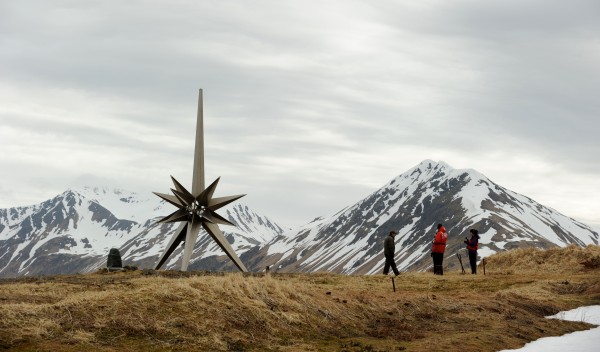
Once they recovered the most remote island in the Aleutian Chain, American forces transformed it, briefly, into a strategic hub. But that decades-old infrastructure has been crumbling under influence of harsh winds, weather, and time.
Now, Attu is scheduled for what may be the first of many stages of cleanup — but it’s unlikely the military will ever be able to turn back the clock to a time before conflict.
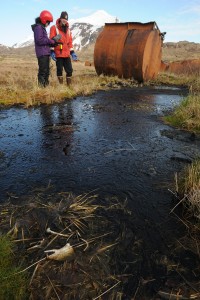
Long before the war, Attu was home to a small village. It was also a haven for birds.
“These common eiders, they just make this cooing — rrr, rrr. On a day like this, it carries across the water,” said Jeff Williams, assistant manager for the Alaska Maritime National Wildlife Ref-uge, standing on the shore of Attu’s Casco Cove in early June. The sun shone brightly, with only the barest breeze pushing its way through tangles of beach grass.
Attu has been a refuge for wildlife since 1913. President Theodore Roosevelt set it aside, along with a handful of other islands that were important to seabirds and marine mammals. But refuge status didn’t stop the military from using those lands during World War II.
There are now more than 20 former defense sites located within the Alaska Maritime National Wildlife Refuge. Attu is the most remote — nearly 1,500 air miles from Anchorage — and one of the most deeply affected. Besides collapsed Quonset huts and spent shells, the tundra is covered with rusting tank farms, decaying fuel barrels, and miles of pipeline.
This summer, Williams and a few volunteers for the U.S. Fish and Wildlife Service stopped to check on one of the worst areas — a field of above-ground storage tanks near an area called Navy Cove.
“I mean, you can see the valve right there, just coming out,” Williams said, pointing to a viscous puddle of black liquid that had oozed from one tank. “It’s a direct source.”
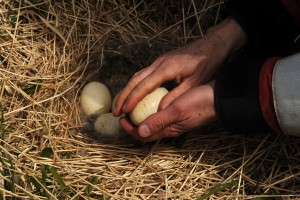
The bodies of at least a half-dozen birds dotted the puddle, their decaying wings jutting out at odd angles — “almost like the La Brea tar pits.”
“It’s not as thick — only a few inches thick. But it’s just enough,” Williams said. He gestured to-ward the edge of the puddle. “See a carcass right over here?”
Over the years, investigators for the Fish and Wildlife Service have found the remains of many more birds trapped in this puddle. It’s the most obvious example of a much broader problem, as infrastructure built to support the Attu Naval Station and the Attu Army Air Base disintegrates.
Both facilities closed in the years following World War II. The naval station came back into use in 1959 amid rising hostility between the United States and the Soviet Union. Within a decade, it had closed again, though, and the military returned all but a sliver of its 82,400-acre reservation to the wildlife refuge. (The remaining 1,800 acres were kept for the U.S. Coast Guard, which continuously maintained a navigational station on Attu until 2010.)
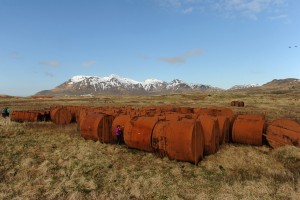
Fish and Wildlife and federal contractors have conducted multiple site studies and reviewed as-built blueprints over the years, but they’ve never determined just how many gallons of petroleum products are still here. There have been some attempts to remove them: Williams said the Navy tried to decommission some of the fuel tanks they installed when the base finally shut down.
“They burned a lot of them. There are pictures of guys with flamethrowers going right up to the tank. It’s really remarkable to see flamethrowers going on gunk like this, just igniting it, and black flames flying up,” Williams said. “You know, I think we’ve changed some since then.”
When the Army Corps of Engineers arrives on Attu in summer 2016, their operations will look much different. The agency has hired Bristol Environmental Remediation Services, LLC — a subsidiary of the Bristol Bay Native Corporation — to remove old storage containers and polluted soil from two sites, including the leaky tank farm.
“We are also aware of a pallet-sized pile of old lead batteries,” said Army Corps project manager Andy Sorum. “And we’re going to target not only the remains of those batteries, but the con-taminated soil around it.”
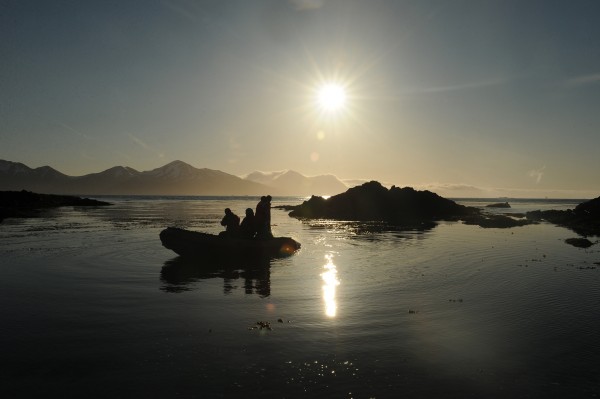
The Army Corps received an extra burst of funding from Congress for this work. The price tag is $10 million; at least 40 percent of that covers a season’s worth of logistical expenses. “There’s nothing easy about getting heavy equipment to Attu and removing the volume of potentially contaminated material that we’re dealing with here,” Sorum said. He expects to deploy a mix of barges and aircraft, since Attu’s runways are still operable.
Sorum also hopes to clean up other sections of the island down the road, working with federal site managers and the Alaska Department of Environmental Conservation on details.
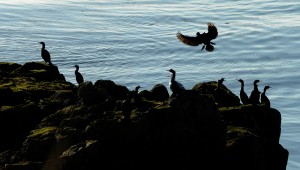
But there are limits to what the Corps can do. Ken Andraschko oversees environmental restoration at old defense sites for the Army Corps of Engineers in Alaska. He said his teams will focus on chemical hazards; munitions and explosives expended during the war are beyond the scope of their program as outlined by Congress.
“Anything that’s actually in a battlefield, anything that was released as part of the battlefield would be ineligible, because that’s defined as an Act of War,” Andraschko said. “And under our program, that is exclusively forbidden for us to go address.”
The battlefield was confined to the easternmost corner of Attu, but it casts a long shadow. American forces invaded by sea and slowly charged inland, through fog and frigid rains. Cut off from reinforcements, many Japanese soldiers decided it was more honorable to perish in battle — or by suicide — than to surrender. About 2,900 men are believed to have died over the course of 18 days.
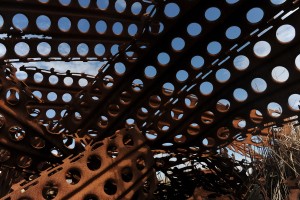
Now, the battlefield is a national landmark and part of a national monument to World War II in the Pacific Theater. “It’s not like your typical Civil War battlefield or your European battlefield where everything’s manicured,” said historian John Cloe. “These things are in a real wild state.”
Cloe knows that first-hand. After retiring from a long career as a reservist and Air Force historian, Cloe is now a guide for a California-based company called Valor Tours. He’s been leading small groups of World War II buffs on sailing trips to Attu since 2013.
When it comes to cleaning up the island, Cloe is strongly in favor. “Go to a Civil War battlefield — you don’t see a lot of junk laying around, do you?” he asked. “It’s unsightly, all this twisted metal laying around. It has very little historical relevance. Somebody needs to look at it and make sure, though.”
It’s still being debated, but that twisted metal may stay put. The federal agencies responsible for managing Attu Island aren’t as concerned about debris, so long as it doesn’t leach chemicals or harm wildlife.

The wreckage wasn’t enough to keep Aleutian cackling geese at bay. This summer, their high-pitched honks rang out from the shoreline all the way up to Attu’s mountain passes. The entire species was nearly extinct before the Fish and Wildlife Service launched a huge effort to bring the cackling goose back into its old nesting grounds on the refuge.
“We didn’t bring these birds to Attu,” said Billy Pepper, captain of Fish and Wildlife’s research vessel. “All we did was remove the fox from here — and all of a sudden we come here one year and hear the [honking] just like you’re hearing right now. It’s like, wow. Now they’re everywhere. It just goes to show you what a little bit of work can do.”
Pepper sailed to the island in June to drop off researchers who wanted to study the island’s birds. As they went about their work, the captain jumped on a four-wheeler and set off down old military roads with a few other Fish and Wildlife employees. They arrived a small interpretive site the agency installed for the 70th anniversary of the Battle of Attu.
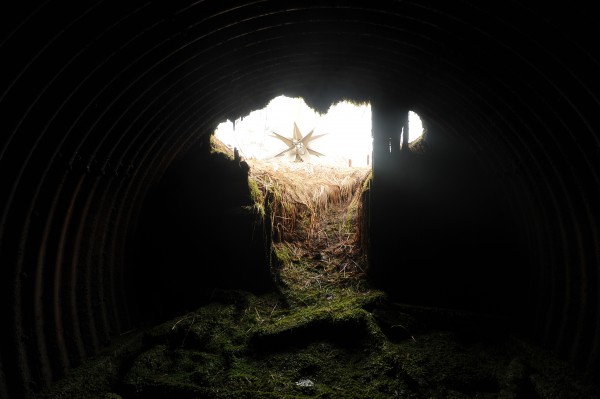
There are a few signs explaining the significance of the Aleutian Campaign during World War II and the bravery shown by Army Private Joseph Martinez, who died leading an assault on a rocky hillside pocked with enemy foxholes.
Pepper sat on a small bench looking out at Engineer Hill, where the final fight took place.
“If you can try to let yourself run with the thought of what that would have been like for a 19-year-old kid, it’d be a lot,” Pepper said, shaking his head. “But they did it. And now it’s kind of gone full circle. It’s back to birds. A little interpretive site here, but it’s mostly birds.”




